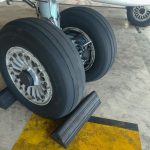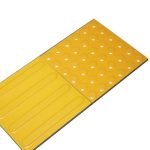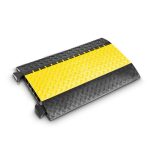Pros of Installing Speed Bumps in New York
Improved Safety for Pedestrians and Cyclists
One of the most significant benefits of installing speed bumps in New York is the improved safety for pedestrians and cyclists. Speeding vehicles pose a significant threat to those on foot or bike, and speed bumps can help reduce the risk of accidents and injuries. By forcing drivers to slow down, speed bumps give pedestrians and cyclists more time to react and avoid collisions. Additionally, speed bumps can help calm traffic in residential areas, making it safer for children to play and walk to school. Overall, the improved safety for pedestrians and cyclists is a compelling reason to consider installing speed bumps in New York.
Reduced Speeding and Traffic Accidents
One of the most significant advantages of installing speed bumps in New York is the reduction of speeding and traffic accidents. Speed bumps force drivers to slow down, making it safer for pedestrians and other drivers on the road. According to a study conducted by the National Highway Traffic Safety Administration, speed bumps can reduce speeding by up to 50%. Additionally, speed bumps can decrease the number of accidents caused by speeding, making the roads safer for everyone. This is especially important in residential areas where children and pets are often present. By reducing speeding and traffic accidents, speed bumps can help create a safer and more peaceful community.
Cost-Effective Solution for Traffic Calming
Speed bumps are a cost-effective solution for traffic calming in New York. Compared to other traffic calming measures such as roundabouts or traffic circles, speed bumps are relatively inexpensive to install and maintain. Additionally, speed bumps can be easily removed or relocated if necessary. However, it is important to note that speed bumps may also have hidden costs such as increased wear and tear on vehicles and potential liability issues if drivers are injured due to the speed bumps. Therefore, it is important for city officials to carefully weigh the pros and cons before deciding to install speed bumps as a traffic calming measure.
Environmentally Friendly Option
Environmentally Friendly Option: Speed bumps can also be an environmentally friendly option. By slowing down traffic, they can reduce emissions from vehicles and improve air quality. Additionally, speed bumps can encourage people to walk or bike instead of driving, which can further reduce carbon emissions. However, it is important to note that speed bumps can also increase noise pollution, especially if they are located near residential areas. Therefore, it is important to carefully consider the location and design of speed bumps to minimize their impact on the environment and surrounding communities.
Cons of Installing Speed Bumps in New York
Increased Noise Pollution
Increased Noise Pollution: One of the major drawbacks of installing speed bumps in New York is the increased noise pollution. As vehicles slow down and then accelerate over the bumps, they create a loud noise that can be disruptive to nearby residents. This can be particularly problematic in residential areas where speed bumps are often installed to reduce speeding. The noise can also be a nuisance for businesses located near speed bumps, as it can disrupt their operations and potentially drive away customers. While some communities have tried to mitigate this issue by installing rubber speed bumps or limiting the number of bumps on a given street, noise pollution remains a significant concern for many residents and business owners.
Potential Damage to Vehicles
One of the major concerns with speed bumps is the potential damage they can cause to vehicles. If the speed bumps are not installed properly or are too high, they can damage the undercarriage of cars and cause expensive repairs. Additionally, emergency vehicles such as ambulances and fire trucks may have difficulty navigating over speed bumps, which could delay response times in critical situations. It is important for city officials to carefully consider the height and placement of speed bumps to minimize the risk of damage to vehicles while still effectively slowing down traffic.
Slower Emergency Response Times
One of the major concerns with installing speed bumps in New York is the potential for slower emergency response times. Speed bumps can slow down emergency vehicles, such as ambulances and fire trucks, which can be detrimental in life-threatening situations. In addition, the time it takes for emergency vehicles to navigate through speed bumps can also delay their arrival at the scene of an emergency. This is a serious issue that needs to be considered before installing speed bumps in high-traffic areas. However, there are ways to mitigate this issue, such as installing speed humps that are designed to allow emergency vehicles to pass through without slowing down.
Inconvenience for Drivers
While speed bumps can be effective in slowing down traffic, they can also be a major inconvenience for drivers. Drivers may need to slow down significantly or even come to a complete stop to navigate over the bump, which can be frustrating and time-consuming. Additionally, speed bumps can cause wear and tear on vehicles, leading to increased maintenance costs for drivers. In areas with heavy traffic, speed bumps can also cause congestion and backups, further adding to the inconvenience for drivers. Overall, while speed bumps may be effective in promoting safety, they can also create significant inconvenience for drivers.
If you’re interested in learning more about the benefits and drawbacks of installing speed bumps New York, be sure to check out Unimat Traffic’s blog post on the topic. They provide valuable insights into the various factors that should be considered when deciding whether or not to install speed bumps in your community. Additionally, Unimat Traffic offers a wide range of high-quality traffic calming solutions that can help improve safety and reduce speeds on your streets. Visit their website today to learn more about their products and services.







